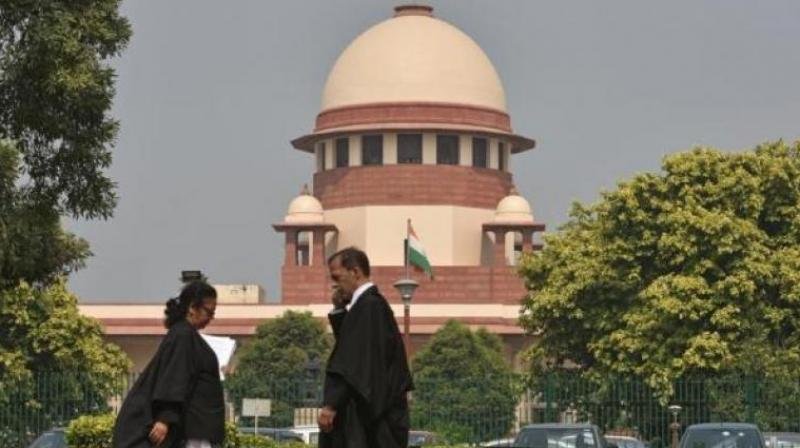22 of India’s 32 big cities face water crisis
சமீபகாலமாக இந்தியாவில் உள்ள பெரும்பாலான முக்கிய பெரும் நகரங்களில் அன்றாட குடிநீர் தண்ணீர் தேவை பற்றாக்குறை அதிகரித்துக் கொண்டே இருக்கிறது. இந்திய அரசுக்கு இப்பிரச்சினை வேகமாக வளர்ந்து வரும் முக்கிய பிரச்சினையாகும்.இதில் மிகவும் மோசமான பாதிப்பு உள்ளான நகரம் ஜாம்ஷெட்பூர் ஆகும்.ஏறக்குறைய இங்கு மக்களுக்கு தேவையான தண்ணீரும் கிடைக்கின்ற தண்ணீர் அளவையும் கணக்கிட்டு பார்த்தால் 70 சதவீத பற்றாக்குறை இருந்து வருகிறது என்று தெரிய வருகிறது..
இந்தியாவில் மக்களின் அதிகரித்து வரும் தேவைகளில் தண்ணீரும் முக்கிய இடத்தைப் பெறுகின்றது. அதிகரித்துவரும் மக்கள் தொகைக்கு ஏற்ப அவர்களின் தண்ணீர்த்தேவை பூர்த்தி செய்யப்பட முடியவில்லை. அரசு அறிக்கையின்படி நாட்டின் முக்கியமான 32 நகரங்களில் 22 நகரங்கள் தண்ணீர்ப் பற்றாக்குறையில் சிக்கித் தவிக்கின்றன.
கான்பூர், அசன்சோல், தன்பாத், மீரட், பரிதாபாத், விசாகப்பட்டினம், மதுரை மற்றும் ஹைதராபாத் போன்ற நகரங்களில் 30 சதவிகிதம் பற்றாக்குறை உள்ளது. இதில், ஜாம்ஷெட்பூரில் அதிகபட்சமாக 70 சதவிகிதம் தேவைகள் பூர்த்தி செய்யப்படமுடியவில்லை.
கிரேட்டர் மும்பை மற்றும் டெல்லி நகரங்களின் தேவை அதிகமாயுள்ள போதிலும், அவை பெரும்பாலும் நிறைவேற்றப்படுகின்றன. கணக்களவில் டெல்லி நகரத்தின் தண்ணீர்ப் பற்றாக்குறை 24 சதவிகிதமாகவும், மும்பை நகரத்தின் பற்றாக்குறை 17 சதவிகிதமாகவும் காட்டப்பட்டுள்ளது.
உதாரணத்திற்கு, டெல்லியின் தேவையான 4,158 மில்லியன் லிட்டர் தண்ணீருக்கு 3,156 மில்லியன் லிட்டர் விநியோகிக்கப்படுகின்றது. ஆயினும்,இதில் 40 சதவிகிதம் விநியோகத்தின்போது வீணாக்கப்படுகின்றது என்று குறிப்பிடப்பட்டுள்ளது.
அந்நகரத்தின் பற்றாக்குறையைவிட வீணாகும் தண்ணீரின் சதவிகிதம் அதிகமாக உள்ளதையும் அந்த அறிக்கை சுட்டிக் காட்டுகின்றது. அரசுக் கணக்கீடுகளில் காணப்படுவதைவிட தண்ணீர் விநியோகம் பல நகரங்களில் குறைவாக இருக்கக்கூடும். அதற்குக் காரணம் தவறான பொறியியல் மற்றும் நிர்வாகக் குறைபாடுகளும்தான்.
சில இடங்களில் நீர்வரத்தே குறைவாக இருப்பதுவும் பிரச்சினைகளை அளிக்கின்றது என்று நீர் ஆதார நிர்வாக வல்லுனராக இருக்கும் திலிப் பவுஸ்தார் தெரிவிக்கின்றார். நகரங்களின் நிலத்தடி நீரை அதிகரிக்கச் செய்வதும் இந்த பற்றாக்குறைகளைச் சமாளிக்க உதவும் என்றும் அவர் தெரிவித்தார்.
10 நகரங்களின் தண்ணீர்த் தேவைகள் பூர்த்தி செய்யப்படுவதாகவும் அல்லது தேவையை விட அதிகக் கையிருப்பு கொண்டதாகவும் அரசு அறிக்கை தெரிவித்துள்ளது. இதில், 52 சதவிகிதம் அதிகப்படியான நீர் ஆதாரங்களுடன் நாக்பூர் முதலிடத்தைப் பிடிக்கின்றது.
பஞ்சாபின் தொழில்நகரமான லூதியானாவில் 26 சதவிகிதம் அதிகப்படியான நீர் இருப்பு உள்ளது. இதுபோல் தன்னிறைவு கொண்ட நகரங்களாக வதோதரா, ராஜ்கோட், கொல்கத்தா, அலகாபாத் மற்றும் நாசிக் விளங்குகின்றன.
நகரங்களின் மக்கள் தொகை அதிகரித்துப் பல வருடங்களுக்குப் பின்னர் குடிநீர்த் திட்டங்களைப் பற்றி யோசிக்கும் இடங்களிலேயே இதுபோன்ற பற்றாக்குறைகள் நிலவுவதாகக் கூறும் அரசின் அறிக்கை, குர்கானின் அபரிமிதமான வளர்ச்சிக்குப் பின்னரே 15-20 வருடங்கள் கழித்து, அந்நகரின் மிகப் பெரிய நீர் ஆதாரம் அமைக்கப்பட்டுள்ளதை சுட்டிக்காட்டுகின்றது.
22 of India’s 32 big cities face water crisis
Water scarcity is fast becoming urban India’s number one woe, with government’s own data revealing that residents in 22 out of 32 major cities have to deal with daily shortages.
The worst-hit city is Jamshedpur, where the gap between demand and supply is a yawning 70%. The crisis is acute in Kanpur, Asansol, Dhanbad, Meerut, Faridabad, Visakhapatnam, Madurai and Hyderabad — where supply fails to meet almost 30% of the demand — according to data provided by states which was placed in the Lok Sabha during the recently-concluded Parliament session by the urban development ministry.
The figures reveal that in Greater Mumbai and Delhi — which have the highest water demand among all cities — the gap between demand and supply is comparatively less. The shortfall is 24% for Delhi and 17% for Mumbai. However, the situation is worse than that.
For example, in Delhi, 3,156 million litres of water (MLD) is supplied against the requirement of 4,158. But around 40% of the supply is lost in distribution resulting in a much wider gap between demand and supply than what’s recorded.
“In official records, many cities might be getting adequate water. But because of faulty engineering and poor maintenance, the actual availability is much less,” said Dilip Fouzdar, a water resource management professional.
He added that though Mumbai gets good rains in comparison to many other big cities, very little of this is actually harvested. “A robust system to recharge ground water can make the city avoid any water shortage,” Fouzdar said.
Experts say that population of cities such as Jamshedpur, Dhanbad and Kanpur have increased manifold, resulting in increased demand for water. But the deeper problem is one of short-sightedness, they said — governments wake up to water demand in a city after the situation has become acute. One such example is Gurgaon, where a major water channel was built almost 15-20 years after large-scale development happened.
The government records show 10 major cities in the country either meet daily water requirements or have surplus supply. Nagpur tops this list, reporting 52% extra supply while Punjab’s industrial city, Ludhiana, has 26% surplus supply. Other cities managing to meet their water demand include Vadodara, Rajkot, Kolkata, Allahabad and Nasik.
What’s also a cause for concern is that majority of the cities are depending on water sources from outside.
In Kochi, the daily water demand is 274 MLD while the supply is 250 MLD per day. Officially, daily water supply in the city is enough to meet almost 90% of the demand provided there is no loss or leakage in distribution.





